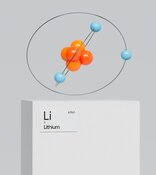The Catalyst Theory
Events that move biotech stocks include the releases of phase 2 and phase 3 trial data, which tell investors if there is a reason to place any hope in a new drug. Phase 3 pivotal data are typically presented in the company's new drug application (NDA), which the U.S. Food and Drug Administration (FDA) uses to make its final decision on whether the drug will get to market. These releases of important trial data can produce extraordinary trading volume and price movement. Last year saw movement that more than doubled share price—or drove the price down nearly 70% (see table: Price Movements on 2012 Trial Data).
The FDA's Advisory Committee (AdCom) meetings, in which expert panelists vote up or down to recommend approval, also produce volatility. AdCom volatility occurs when briefing documents are disseminated to the public two days before the meeting, and then again on the final panel vote (see table: Advisory Committee Volatility). AdComs are not required, but when products are truly new in their mechanisms of action or in their composition, or when they might be used on a chronic basis for treatment of patients over a lifetime, AdComs are convened. The FDA can overrule the AdCom panel vote, but most times the agency follows the committee recommendation to approve or not approve a new product on the Prescription Drug User Fee Act (PDUFA) meeting date. This is the final step in the regulatory pathway (see table: Price Movements on PDUFA Dates 2012). Trial data, panel votes and PDUFA dates make the shares of smaller companies move one way or the other.
The FDA's New Hurry-Up Attitude
Initial PDUFA legislation was ratified in 1992 and has been renewed in five-year increments: 1997 (PDUFA II), 2002 (PDUFA III), 2007 (PDUFA IV) and 2012 (PDUFA V). PDUFA IV improved the FDA's authority and expanded its resources appreciably, enabling it to get drugs through the gauntlet of regulatory hurdles and entrenched paralysis more quickly. Not only are more drugs getting through, but the process has been ramped up with a vengeance. The FDA reached a 16-year high in 2012 when it approved a total of 39 new medicines—nine more than in 2011, which compares dramatically to an average of about 23 new products per year over the last decade.
Phases of the FDA Drug Approval Process
• An investigational new drug application (IND) is submitted to the FDA before a molecule enters a human.
• A phase 1 study is conducted. This is the first time a human is dosed with an experimental therapy. The study sample is generally small (less than 100 individuals, all volunteers). The study is used to determine the best way to administer a therapy and to test for toxicity.
• A phase 2a study (human safety and dose trial) is conducted.
• A phase 2b study (human proof-of-concept trial) is conducted.
• A phase 3 study, which is a large human trial to determine safety and efficacy, is conducted. It can include many thousands of subjects spread out over many medical centers (referred to as a multicenter trial).
• A pivotal trial (phase 3 human study) is conducted. This determines the final package of data to be sent to FDA with the new drug application (NDA).
• The NDA is sent to FDA with accumulated data from phase 1–3 trials that encompass years of preclinical and clinical study. When the NDA is submitted, approval or rejection can take one to two years.
• Upon approval, a drug can be marketed. A phase 4 study is a post-marketing study to monitor safety and efficacy.
To see The Life Sciences Report Watchlist 2013, click here.
DISCLOSURE:
From time to time, Streetwise Reports LLC and its directors, officers, employees or members of their families, as well as persons interviewed for articles on the site, may have a long or short position in securities mentioned and may make purchases and/or sales of those securities in the open market or otherwise.











































